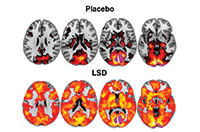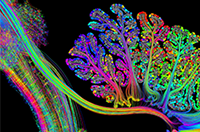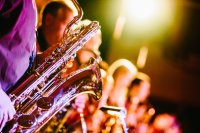
This is Your Brain on LSD and Music
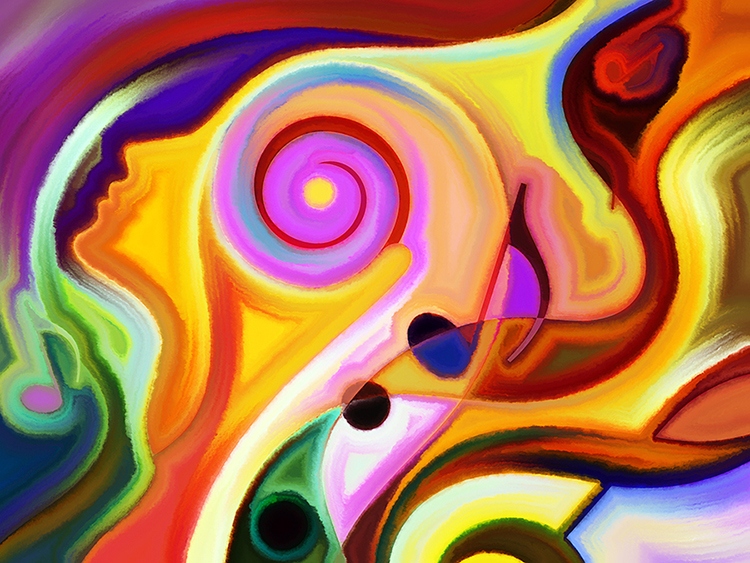
Image: Shutterstock
Few things impact the human brain as profoundly as LSD and music, both of which can produce mind-opening alterations in consciousness, often leading to life-changing insights and transformations. When combined, these two ingredients also have enormous psychotherapeutic value, and at Horizons 2017: Perspectives on Psychedelics, Mendel Kaelen of the Beckley/Imperial Research Programme will delve deep into the workings of the mind in order to reveal why this is the case.
LSD, music and psychedelic psychotherapy
Back in the 1960s, researchers noticed that introducing music into psychedelic psychotherapy sessions helped patients to overcome their psychological and emotional disorders. Though little was known about what was going on in the brain, patients often reported that their emotion became more therapeutically meaningful and that their mental images became more personal and autobiographical.
More recently, Kaelen and his colleagues have been using brain-imaging technology to decipher how LSD and music work together in the brain to produce these effects.
“We found that the interaction between music and LSD increases the information going from the parahippocampus – a brain region specializing in personal memory – to the visual cortex, which is involved in the construction of mental images,” he explains. “And the greater the magnitude to which that happens, the more vivid and autobiographical the images became.”
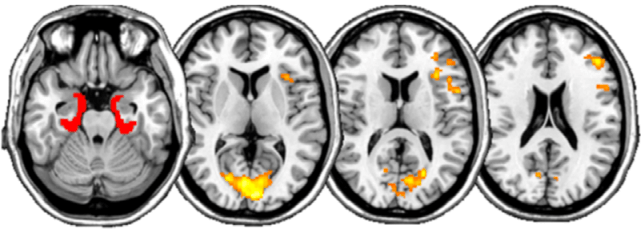
LSD and music combine to increase the flow of information from the parahippocampus to the visual cortex
What makes music so effective?
In a separate study, Kaelen and his team investigated how the brain processes the many different aspects of music – such as rhythm and frequency – while on LSD. One characteristic that was found to be particularly important was timbre, which refers to the property in the sound that we use to distinguish between different instruments and voices.
“We saw increased brain activity in response to timbre, and also found that these changes were localized in regions specializing in processing emotion and attributing meaning to sound, like the Broca area,” says Kaelen.
Importantly, the researchers also noted that the magnitude of the brain response to timbre was correlated with an increase in music-evoked feelings of “wonder” and “transcendence”, both of which have been identified as therapeutically valuable components of the “peak experiences” produced by psychedelics.
“These studies give some support to the idea that music can be used to increase the likelihood of certain experiences occurring that may have strongest therapeutic value, such as peak-experiences or autobiographically meaningful experiences,” he adds.
What types of music go best with LSD?
“Against the Sky” By Brian Eno and Harold Budd featured on Mendel’s psychedelic psychotherapy playlist
Kaelen and his team carefully constructed a playlist for their psychedelic psychotherapy sessions, skillfully generating moods to match patients’ experiences and therapeutic needs. For instance, reassuring tracks like ‘Against the Sky’ by Brian Eno and Harold Budd were played during the initial phase, in order to calm participants’ nerves.
This later gave way to intensely emotional music such as Henryk Górecki’s “Sostenuto tranquillo ma cantabile” once patients entered the peak phase of the experience.
Through interviewing participants, the team learned that classical and world music were the most appreciated genres, that the presence of human vocals increased the sense of intimacy and that, on the whole, the music helped to “guide” listeners on their personal “journey”.
It is surely no coincidence that indigenous shamans across the world regularly combine psychedelics with music in order to guide their patients. Anthropologist Marlene Dobkin de Rios, for instance, described the songs of ayahuasca curanderos as a “jungle gym” that helps patients navigate their own consciousness.
Yet Kaelen’s research also revealed that different patients can have very different reactions to the same songs, depending on how much the music resonates with their present mood. This, he says, may highlight the need to create optimized playlists for each patient, rather than adopting a one-size-fits-all approach to musical psychedelic psychotherapy.
Like the ayahuasca shamans of the Amazon, psychedelic psychotherapists must now assume the responsibility of learning to select, or perhaps even create, the right music to guide their patients through the psychedelic healing process.
Words: Benjamin Taub
Podcast
- All
Links
- All
Support
- All
BIPRP
- All
Science Talk
- All
Amanda's Talks
- All
- Video Talk
- Featured
- 2016 Onwards
- 2011-2015
- 2010 and Earlier
- Science Talk
- Policy Talk
One-pager
- All
Music
- All
Amanda Feilding
- All
Events
- All
Highlights
- All
Psilocybin for Depression
- All
Current
- All
Category
- All
- Science
- Policy
- Culture
Substance/Method
- All
- Opiates
- Novel Psychoactive Substances
- Meditation
- Trepanation
- LSD
- Psilocybin
- Cannabis/cannabinoids
- Ayahuasca/DMT
- Coca/Cocaine
- MDMA
Collaboration
- All
- Beckley/Brazil Research Programme
- Beckley/Maastricht Research Programme
- Exeter University
- ICEERS
- Beckley/Sant Pau Research Programme
- University College London
- New York University
- Cardiff University
- Madrid Computense University
- Ethnobotanicals Research Programme
- Freiburg University
- Medical Office for Psychiatry and Psychotherapy, Solothurn
- Beckley/Sechenov Institute Research programme
- Hannover Medical School
- Beckley/Imperial Research Programme
- King's College London
- Johns Hopkins University
Clinical Application
- All
- Depression
- Addictions
- Anxiety
- Psychosis
- PTSD
- Cancer
- Cluster Headaches
Policy Focus
- All
- Policy Reports
- Advisory Work
- Seminar Series
- Advocacy/Campaigns
Type of publication
- All
- Original research
- Report
- Review
- Opinion/Correspondence
- Book
- Book chapter
- Conference abstract
- Petition/campaign
Search type
